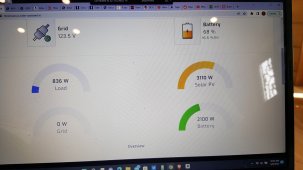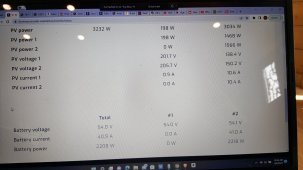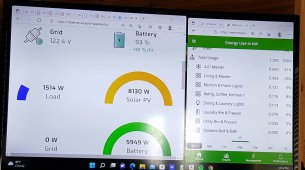"still not clear to me why when float was at 53v only 1 inverter wanted to charge" Pretend you have the cruise control set on your car at 65MPH. You start up a hill and you notice the speed drops to 63 and someone is right behind you. You push your foot down a bit and give it more gas, and get the speed back up. You top the hill and are now going 67. There is a very slight grade on the other side, but not steep enough that gravity will make you go 65. You are still at 67 so you let off a bit.....66, you let off a bit more....65 you let off some more, still 65, and you let off more and more and finally you are not even touching the pedal. You have lost control because the other controller is managing the speed. That might not be the best example but it is fairly close. For current to flow, a charger must up the output voltage to be higher than the battery. But as the battery charging load or the inverter output load becomes less, the charger must back off so the battery voltage doesn't overshoot. The two chargers are not working together as a unit. One will be in control and other will be doing "something", which might be backing off to the point of doing nothing. That one has reduced its efforts because if it did anything to make more current flow, the battery voltage would to above the setting. This is a long way to describe what Timselectric said.
Under these conditions, if you put more load on the inverter than one charger can deliver, the other charger should come back to life, much like the unhappy driver going 63 MPH. The battery would likely need to get below float setting for this to be observed.





